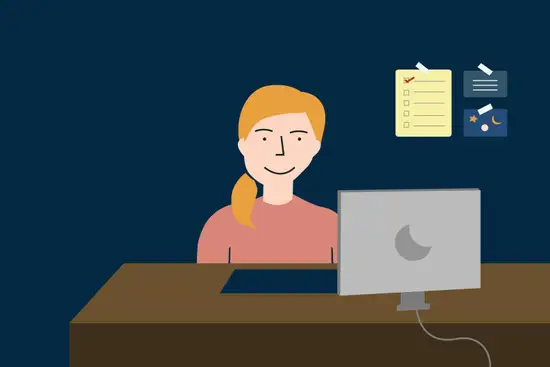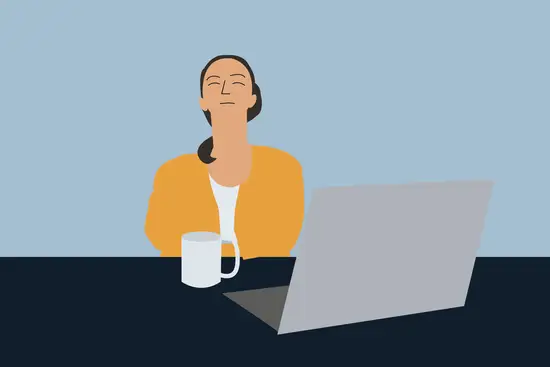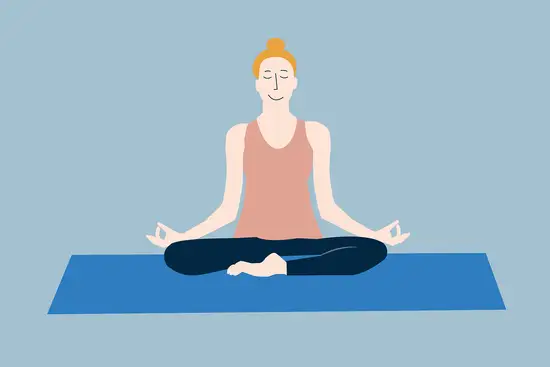Key points
Getting to sleep isn’t always easy, so in this article we’re going to look at all the factors that go into falling asleep fast. We’ll discuss:
- popular sleep tips on how to fall asleep fast
- lifestyle factors that could be coming between you and sleep
- how to sleep better at night naturally
- when falling asleep fast could be a sign of a sleep problem.
Can sleep hacks really help you fall asleep fast?
A quick internet search for how to fall asleep fast can provide you with countless tips and tricks claiming to help you get to sleep quickly and easily.
Whether it’s the military sleep method, thought blocking, body scanning or the many other articles on how to fall asleep instantly/in ten seconds/two minutes/five minutes… there’s a lot to choose from.
But do they work?
In this article, we’re going to explore some of the most popular techniques, tips and sleep hacks that are supposed to send you off to sleep quickly. Plus, we’ll share with you our top tips to help you get to sleep at night.
Unlike many of the sleep hacks, we promise that all our advice is backed by strong scientific evidence. If you’re still not managing to get to sleep even after trying all of our tips, our clinically validated sleep improvement programme may be just what you need.
So let’s get started and discover how long it should actually take you to get to sleep.
Tired of sleep hacks?
Did you know that difficulty falling asleep can be a type of insomnia? Sleep-onset insomnia occurs when you can’t get to sleep, night after night. The good news is that like most types of insomnia, this form responds incredibly well to treatment. Our sleep improvement course only takes around 6-8 weeks to complete. It’s clinically validated and backed by solid science, so let us show you how to get back to sleeping fast and sleeping well.
How quickly should you fall asleep?
In the world of sleep science, the amount of time it takes you to fall asleep is referred to as sleep latency or sleep onset latency (SOL). This is used to describe how long it takes you to go from being fully awake (lights out) to fully asleep.
It should take you around 10-20 minutes to fall asleep after lights out.1 But don’t worry if it’s taking you slightly more or less time than this, it’s not necessarily a sign of poor sleep.
According to guidelines from America’s National Sleep Foundation, good sleep quality corresponds with taking between 0-30 minutes to get to sleep.2 The guidelines state that taking 45-60 minutes to get to sleep is an indicator of poor sleep in all age groups except older adults.
Taking over an hour to get to sleep is also listed as a marker of poor sleep quality in all age groups. If it takes you 30 minutes to get to sleep but you wake up full of beans and ready for the day, then your sleep is likely fine.
On the other hand, if you’re crawling into bed exhausted, it’s taking you half an hour to fall asleep and you still wake up tired, then there’s probably steps you can take to improve how fast you fall asleep.
Some people can get into bed and fall straight asleep. If this is you and you’re sleeping well and waking up refreshed, that’s great! You’re probably one of those lucky people who just happens to fall asleep easily and it sounds like your sleep is fine.
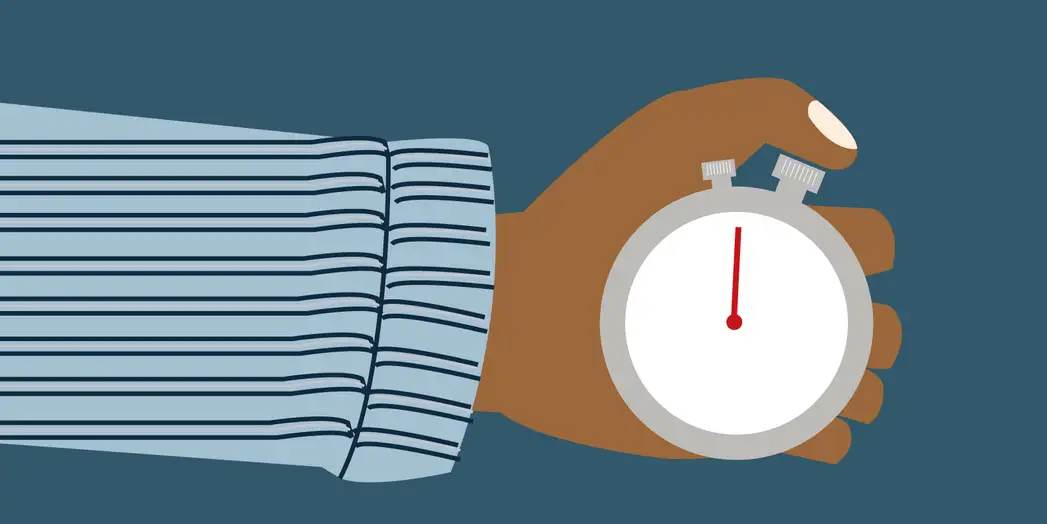
If you’re falling asleep as soon as your head hits the pillow but waking up unrefreshed and lacking in energy, then it’s likely your sleep needs aren’t being met. There’re many factors that could be at play, such as:
- going to bed too late
- not giving yourself enough time to sleep
- waking during the night
- drinking alcohol before you sleep.
In these scenarios, you might want to have a deeper look into your routine and sleep habits to see if you can identify what could be affecting your sleep.
Whether you want to fall asleep faster or want to understand more about what could be making you fall asleep so quickly, keep reading. We’re going to cover all bases when it comes to falling asleep fast.
Popular ways to fall asleep
We’ve compiled a list of the sleep hacks and techniques that get mentioned consistently across social media and in the press. We’ve looked at them all individually and outlined what each involves to explain why they may or may not work to help you get to sleep, fast.
1. Military sleep method
This is one technique that’s been popularised by social media channels recently, but it’s not a new technique. It’s reported to have been developed by the US military and is detailed in a 1981 book called Relax and Win: Championship Performance.3
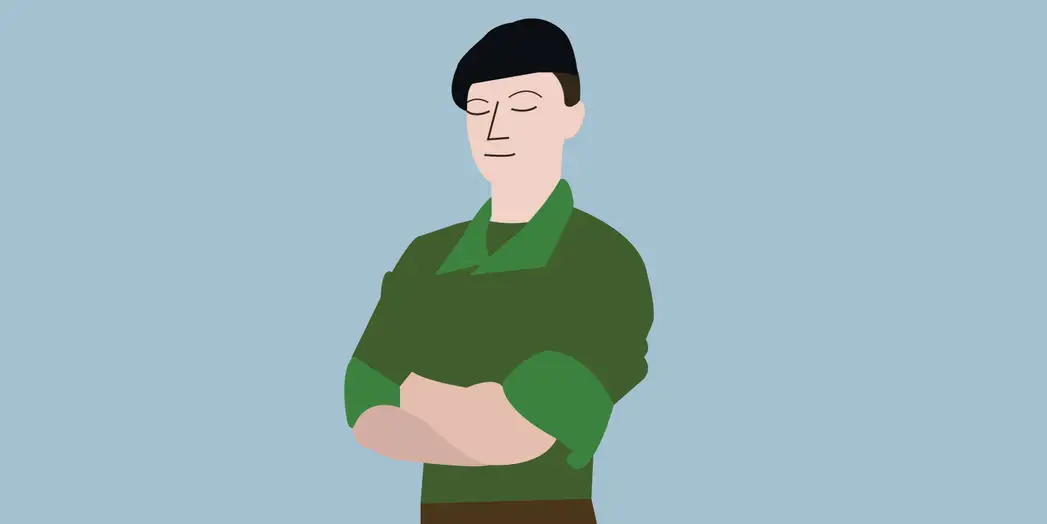
In the original book, the author goes into a lot of detail about how to effectively perform each step of this technique to fall asleep fast. In brief, the military technique involves the following steps:
- Let your face relax, from your forehead down to your jaw.
- Drop your shoulders, loosen your arms and allow your hands and fingers to dangle.
- Exhale and relax your chest and your stomach.
- Relax your legs from thigh down to calf and all the way to your feet and toes.
- Try to clear your mind of all thoughts and stresses.
- If it’s hard to clear your mind, repeat the words ‘don’t think’ for ten seconds.
It’s claimed that if you follow these steps, you should fall asleep within a couple of minutes. The technique might not work right from the first try but following the same routine every night for six weeks is reported to lead 96% of users to fall asleep within two minutes.
The key here appears to be that it involves creating routine as you try to get to sleep. By performing the same steps each night, there’s a good chance that your brain will start to make a link between the steps you’re taking and going to sleep.
While it may work for some people, there’s a lack of scientific research to back it up, so if the military method doesn’t work for you, don’t despair. While the steps of the technique can relax your body and mind, if you have a sleep disorder it might not be enough to get you to sleep.
2. 4-7-8 breathing
This is another technique that’s popular and relatively simple to apply. It involves breathing deeply, which aims to help you relax. There’re only three steps to this technique:
- Breathe in through your nose for a count of four. You want to feel your stomach expand outwards here, so take in a good bellyful of air.
- Hold your breath for a count of seven. You don’t want to strain, just gently hold it in.
- Breath out of your mouth for a count of eight. Do this with a little force, through pursed lips so you can just hear it.
This is one cycle of the technique and you should aim to repeat it a total of three times.
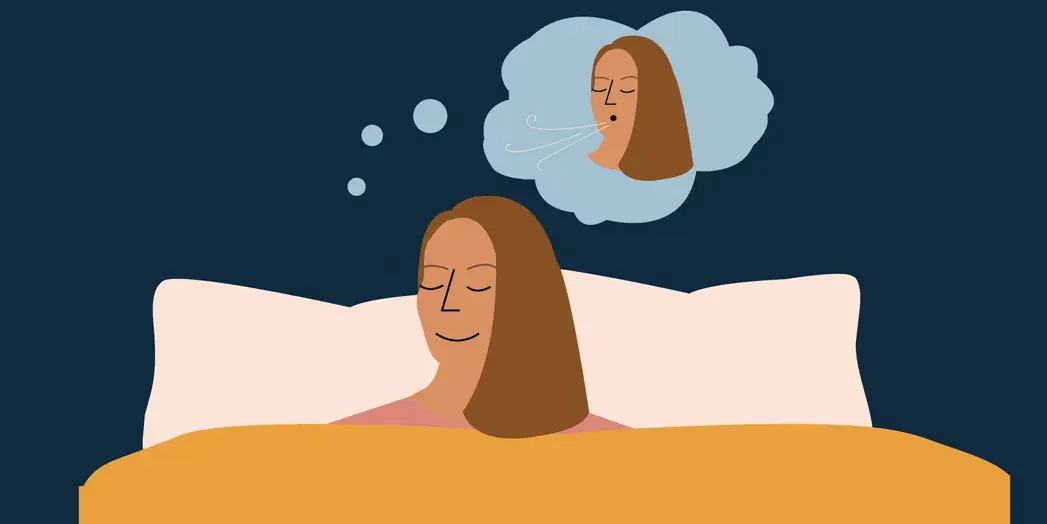
Try to keep your counting slow and regular at each stage. It may take a little practice to master this method’s breathing techniques, but the key is to keep it relaxed and not forced. Like the military method, you may see benefit here if you do this method regularly.
This method has been studied in one scientific paper,4 but not as a way to help people get to sleep so we can’t say for sure how effective it could be. It could still be a helpful way to relax yourself in preparation for sleep.
3. Progressive muscle relaxation (PMR)
This technique involves focusing on tensing and then relaxing your muscles in sequence. This might not seem like something that would help you to sleep, but PMR has been successfully used to help people relax for nearly a century and there’s a lot of science to back it up.
PMR was developed by Dr Edmund Jacobson in the 1920s as a form of deep muscle relaxation. It was originally intended to help people manage stress and anxiety and was then found to be useful to help people relax and sleep.5
Some advocate working from the top of your head down to the tips of your toes, while others advise the opposite route. Either way, you begin by tensing or tightening a chosen area of muscles. So, if you’re beginning at your head, you tense the muscles of your forehead for 5-15 seconds.
Don’t worry if you find it difficult, just focus on trying. Then release your muscles whilst breathing out gently. Allow yourself up to 30 seconds to relax and release the tension then move on to your eyes/cheeks/jaw.
Work your way through different areas of muscle, tensing and releasing from neck, shoulder, arms, trunk, hands, legs, feet, toes… all the way down your body. This technique aims to help you release tension from every part of your body, allowing you to relax enough to fall asleep.
Unlike the first two methods, lots of scientific studies have looked at PMR, both for its use to aid sleep and as a tool to help people with a host of different illnesses and disorders to manage pain and relax.6 7 8 9
PMR can reduce feelings of pain and help people with certain conditions (such as fibromyalgia and cancer) to sleep. There’s some evidence that it may help people with insomnia to get to sleep, but it’s not as effective as Cognitive Behavioural Therapy (CBT) approaches for insomnia.10
4. Paradoxical intention
This is another technique which involves you controlling your thoughts. Paradoxical intention works by you challenging yourself to NOT fall asleep. So, once you’re in bed and settled, you try to stay awake.
By switching the goal to staying awake, you remove all pressure to fall asleep. For some of us, once you get into bed, you become anxious that you won’t be able to fall asleep.
This is called anticipatory anxiety and it causes you to feel anxious about a future event. In this case, the future event is falling asleep. So, you get into bed but can’t sleep because you’re worrying about getting to sleep.
What if it takes you hours to fall asleep? What if you don’t sleep at all? How will you get through tomorrow if you don’t fall asleep soon? These might be the kind of questions that are going through your mind in bed.
Because your brain can’t break from this anxious thinking, you’ll likely stay awake and find it hard to sleep. This is where paradoxical intention can help. As we’ve said, you get into bed and try not to sleep.
If you’re trying NOT to sleep then you shouldn’t feel anxious about getting to sleep.
By intentionally trying not to sleep, this technique can help you to relax and stop worrying about getting to sleep… which ultimately helps you to fall asleep. As you can’t stay awake forever, the end result should be that you fall asleep.
Sounds crazy? This technique has been used in the treatment of insomnia since the 1970s and researchers have found it to be effective at improving insomnia symptoms.11
5. Visualisation techniques
These involve imagining a scene or image in your head that makes you feel happy, peaceful and calm. You focus on recreating the scene in your mind, down to the smallest detail.
So, for example, if you’re thinking of a vase of tulips, you would visualise the vase, water, stems, leaves and petals. Continue to visualise more detail, create the patterns on the vase, think about the details in the petals.
Maybe you’re visualising a scene, such as a woodland. In addition to what you can see, you can consider the smells of the wood, the noises of the trees and the sensation of sunlight or wind on your skin.
These exercises work by focusing your attention away from actively trying to fall asleep and should make you feel relaxed and calm. At some point in your visualisation, you should ultimately fall asleep.
6. Mediation and yoga
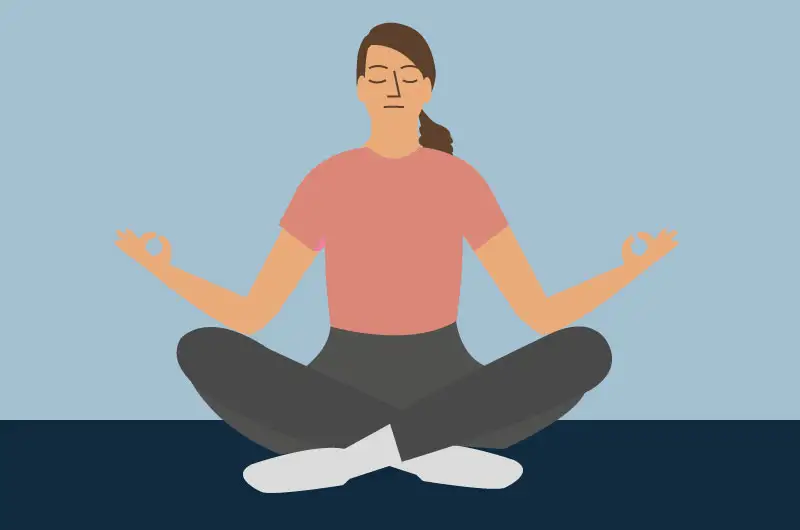
Meditation and yoga both involve concentrating on controlling your breathing and being mindful. Mindfulness is a technique where you focus on what is going on around you in that moment and how you’re physically feeling.
Where yoga and meditation differ is that yoga is physical and involves movements whereas meditation is usually performed while you’re being still.
Studies have shown that various meditation and yoga techniques can improve sleep, whether those using the techniques have sleep problems or not.12 13 14 Both yoga and meditation techniques can reduce stress and bring about increased feelings of calm.
These techniques can help you to fall asleep fast because they relax you. By getting into a relaxed state, you should then be able to fall asleep quickly and easily. They’re techniques that may take a while to carry out and to master, but they can help you fall asleep fast.
Proven steps to falling asleep fast
So, we’ve outlined some of the most popular and common techniques that may be helpful in getting you to sleep fast. We can’t promise they’ll work for everyone, but they’re all useful tools to have at your disposal once you’re in bed and ready to sleep.
It’s worth noting that the techniques above aren’t just for adults. They can also be helpful techniques for kids and teenagers to get to sleep fast, too.
Clearly these methods are outside the remit of younger children and infants, but the following section contains sleep advice that is applicable to the whole family, regardless of age.
If you want to improve how long it’s taking you to get to sleep, it’s worth also looking beyond the hints and tips. Your daily routine during your waking hours has a huge influence on how you sleep at night.
If you want to get to sleep fast, you also need to look at what’s going on during your awake time.
Falling asleep quickly isn’t just about getting into bed and trying out the latest tip or hack. You might not realise that your day has a profound effect on how you sleep. Plus, your home, work and general environments can influence how well you sleep.
We’ve made our list of six areas of lifestyle and environment you might want to give some thought to if you’re looking to fall asleep fast or just improve your sleep overall.
1. Use light to your benefit

Your body clock is heavily regulated by exposure to sunlight. Once those first rays of light in the morning enter your eyes, signals are sent throughout your brain and body that it’s the start of a new day and it’s time to wake up.
Getting exposure to natural daylight, if possible morning light, suppresses the secretion of the hormone melatonin in your body.15 Melatonin is involved in many processes in your body, but it’s most well-known for its role in helping you to sleep.
In the morning, melatonin levels are low and levels stay so for most of the day until, with dusk approaching, melatonin levels begin to rise. The rise in melatonin is a signal to the body and mind to start winding down and get ready for sleep.
If your daily schedule strays too far from the natural rhythm of morning=light, evening=dark, you can become out of sync with your body’s natural melatonin rhythms. By taking steps to ensure you get exposure to light during the day and less so at night, you should keep in sync with this important sleep hormone.
So how can you use light to your benefit?
You should aim to get exposure to natural light in the morning as this will reset your body clock. Then help your body and mind realise that the time to sleep is getting closer by reducing your exposure to light in the evening.
In the evening, you should keep house lighting low and aim to limit exposure to bright light. Not only does pre-sleep light exposure suppress melatonin, it also decreases how sleepy you feel.16
And don’t forget that the light coming from your smartphone, tablet, computer or TV counts too. If possible, aim to shut down your devices at least an hour before bed. Even the little LED on an extension cable or charger can disturb sleep, so don’t overlook these either.
You want your room to be as dark as possible, so if light pollution from outside makes your bedroom light at night, you may want to consider putting up a blackout blind or curtain to keep the light out while you sleep.
You could also consider using a light-based alarm clock to wake you up. These types of alarms slowly increase the level of light in your bedroom in the morning, so aim to wake you up more naturally and slowly than sound-based alarms.
2. Make time for exercise
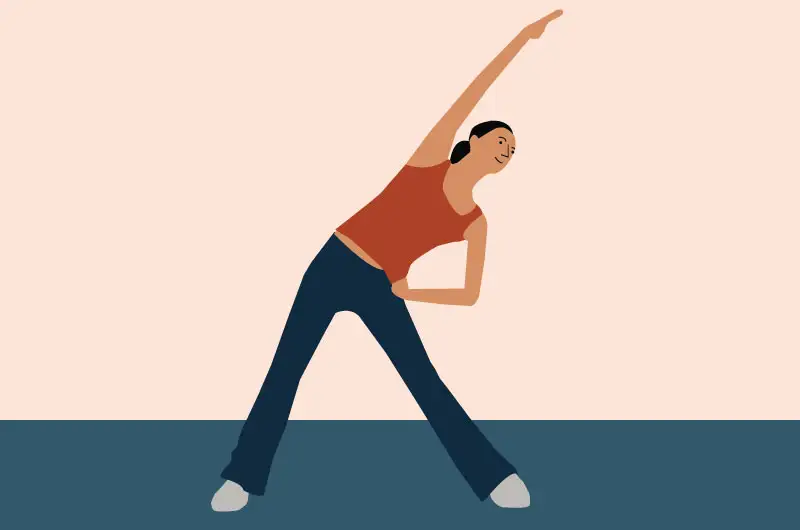
We all know that regular exercise is key to staying healthy and keeping our weight in check, but so many of us don’t consider the connection between exercise and sleep. When you exercise you’re helping to create a need for sleep.
At the start of your day, after a good night’s rest, your need for sleep (or sleep drive) should be very low. Over the course of the day, your sleep need increases and by bedtime, the need to sleep should be so high that you fall asleep quickly once you’re in bed.
This is why, after a day spent doing nothing much, it can be hard to fall asleep but after an action-packed day, you might be ready for sleep as soon as you get into bed. So, by including exercise in your daily routine, the benefits are threefold: you’re taking care of your health, weight and sleep.
Many studies have looked at the effects of exercise on sleep and results show that exercising regularly can help reduce symptoms of sleep disturbance and improve insomnia.17 18 So, it’s clear that adding in exercise to your daily routine can have positive effects on your sleep.
We’re often told not to exercise too close to bedtime, but as long as you give your body enough time to cool down and relax after your workout session and don’t do anything too vigorous, exercise in the evening should be fine.19
3. Look at your diet
What you eat and drink can have major impacts on your sleep. Eating too close to bedtime can mean that your body is still busy digesting your meal when you go to bed and this can interfere with getting to sleep.
As a general rule, you should avoid eating fatty, overly-spicy or large meals too close to bedtime as these can all increase your body temperature and interfere with sleep, but a small evening snack shouldn’t get in the way of your sleep.
The same rules apply to what you drink. Both alcoholic and caffeinated drinks can affect sleep.20 21 22 While alcohol can make you fall asleep quicker, it leads to a poorer quality sleep, so you don’t wake refreshed.
For some people, caffeine can also stop them sleeping if it’s consumed too close to bedtime. Caffeine metabolism differs from person to person, which explains why some people can drink a coffee and go straight to bed while others can’t.
If you’re having difficulty getting to sleep, then looking at your caffeine intake is worthwhile.
You could try having your final caffeinated food or drink a little earlier to see if this helps you fall asleep easier, or look at reducing your caffeine intake to see how that affects your sleep.
4. Take care of your mental health
Sleep and mental health share a close relationship. When you take care of one, the other benefits. It’s well-established that stress, anxiety and depression can all negatively affect sleep and when we sleep badly, our mental health can suffer.
So, if you’re having trouble sleeping, it’s worth considering if your mental health could be one factor coming between you and sleep. For more information and advice, you can read our tips on how to destress before bed, handling anxiety and the effects of depression on sleep.
Many of the techniques to fall asleep fast that we covered in the previous ‘popular ways to fall asleep’ section can help you to relax and unwind before sleep. Thought-blocking techniques for sleep may also be useful if your stresses and worries are stopping you from getting to sleep.
5. Look at your sleep and living environments
Where you sleep should ideally be dark, cool and quiet. As we’ve discussed earlier, light plays a big role in regulating sleep, so keeping screens out of your bedroom and ensuring your sleep space is dark will encourage sleep.
Temperature plays an important role in regulating sleep too.23 To get to sleep, your body temperature needs to drop by approximately 1°C, so keeping your bedroom on the cooler side may also help.
Making minor adjustments to create the ideal bedroom setup could be a major boost to your sleep.
6. Create some routine
We will never tire of saying sleep loves routine. For some of the sleep tips in the last section to be successful, the key is to repeat the technique every night. By doing it over and over, you are inadvertently following a set routine, night after night.
When you practise the same method every night, your brain starts to make an association between the activity of, say, doing a relaxation exercise each evening and the fact that following this activity you go to sleep. We call this a sleep association.
A good way to prepare for sleep each night is to have a consistent wind-down routine in the evening. It can be as simple as reading a book before bed or as elaborate as you wish. As long as you keep some level of consistency to it, your brain should make the association with getting ready to sleep.
What to do if you still can’t get to sleep
If you’ve tried all the sleep tips and you’re still not able to get to sleep fast, you might be thinking: what now? It could be that you’re actually experiencing a form of insomnia called sleep-onset insomnia.
Insomnia comes in many guises but one of the most common forms is an inability to fall asleep when you go to bed at night. While a diagnosis of insomnia can be daunting, many people don’t realise that insomnia responds extremely well to treatment.
We also discussed that falling asleep really quickly, but not waking up refreshed, can indicate that your sleep isn’t great. Common reasons include your sleep need not being met, waking during the night, experiencing obstructive sleep apnoea or something else entirely.
At Sleepstation’s leading digital sleep clinic, we’ve spent over a decade, we’ve got nearly a decade of experience helping people to overcome insomnia and take back control of their sleep, so whether you’re finding it difficult to fall asleep or are falling asleep too quickly, we’ll be able to advise you.
We use Cognitive Behavioural Therapy for insomnia (CBTi), a technique supported by decades of science and proven to give sustainable results. We also use sleep restriction therapy, which can be really effective in helping you regain the ability to fall asleep fast at bedtime.
Unlike a quick fix sleep hack, our programme equips you with the knowledge and ability to regain control over your sleep, long-term.
If you’re worrying about how long it’s taking you to get to sleep, answer a few short questions about your sleep and we’ll recommend the best options to help you get back to sleeping well. Our six week course has been clinically validated and is highly effective.
We’ve helped thousands of people just like you to get their sleep back on track and their feedback speaks for itself. So, instead of searching for the next sleep hack, why not see how we can help you today.
Summary
- If you’re sleeping well, you should expect to fall asleep within about 15 minutes of going to bed.
- There’s a wide range of techniques that claim to help you fall asleep fast but results will depend on you individually.
- Making simple changes to your lifestyle and environment can help you to fall asleep quicker.
- If you’re regularly having difficulty falling asleep at night, you may have sleep-onset insomnia.
- Insomnia responds really well to treatment and Sleepstation can help you get back to sleep, fast.
References
- Shrivastava D, Jung S, Saadat M, Sirohi R, Crewson K. How to interpret the results of a sleep study. J Community Hosp Intern Med Perspect 2014; 4: 24983. ↩︎
- Ohayon M, Wickwire EM, Hirshkowitz M, Albert SM, Avidan A, Daly FJ et al. National Sleep Foundation’s sleep quality recommendations: first report. Sleep Health 2017; 3: 6–19. ↩︎
- Winter B. Relax & Win: Championship Performance. Oak Tree Pubns; 1981. ↩︎
- Vierra J, Boonla O, Prasertsri P. Effects of sleep deprivation and 4-7-8 breathing control on heart rate variability, blood pressure, blood glucose, and endothelial function in healthy young adults. Physiol Rep 2022; 10: e15389. ↩︎
- Jacobson E. The origins and development of progressive relaxation. J Behav Ther Exp Psychiatry 1977; 8: 119–123. ↩︎
- Insomnia: Relaxation techniques and sleeping habits. Institute for Quality and Efficiency in Health Care (IQWiG); 2017 ↩︎
- Krystal AD. Treating the health, quality of life, and functional impairments in insomnia. J Clin Sleep Med. 2007;3(1):63–72. ↩︎
- Simon KC, McDevitt EA, Ragano R, Mednick SC. Progressive muscle relaxation increases slow-wave sleep during a daytime nap. J Sleep Res [Internet]. 2022;e13574. ↩︎
- Yoo S-A, Kim C-Y, Kim H-D, Kim S-W. Effects of progressive muscle relaxation therapy with home exercise on pain, fatigue, and stress in subjects with fibromyalgia syndrome: A pilot randomized controlled trial. J Back Musculoskelet Rehabil [Internet]. 2022;35(2):289–99. ↩︎
- Low T, Conduit R, Varma P, Meaklim H, Jackson ML. Treating subclinical and clinical symptoms of insomnia with a mindfulness-based smartphone application: A pilot study. Internet Interv [Internet]. 2020;21:100335. ↩︎
- Jansson-Fröjmark M, Alfonsson S, Bohman B, Rozental A, Norell-Clarke A. Paradoxical intention for insomnia: A systematic review and meta-analysis. J Sleep Res 2022;31:e13464. ↩︎
- Jiang A, Rosario M, Stahl S, Gill JM, Rusch HL. The effect of virtual mindfulness-based interventions on sleep quality: A systematic review of randomized controlled trials. Curr Psychiatry Rep 2021;23:62. ↩︎
- Wang Y-Y, Wang F, Zheng W, Zhang L, Ng CH, Ungvari GS, et al. Mindfulness-based interventions for insomnia: A meta-analysis of randomized controlled trials. Behav Sleep Med 2020;18:1–9. ↩︎
- Khalsa SBS, Goldstein MR. Treatment of chronic primary sleep onset insomnia with Kundalini yoga: a randomized controlled trial with active sleep hygiene comparison. J Clin Sleep Med 2021;17:1841–52. ↩︎
- Zhdanova IV. Melatonin. In Daroff RB, Aminoff MJ (eds.). Encyclopedia of the neurological sciences. Academic Press, 2014. ↩︎
- Blume C, Niedernhuber M, Spitschan M, Slawik HC, Meyer MP, Bekinschtein TA et al. Melatonin suppression does not automatically alter sleepiness, vigilance, sensory processing, or sleep. Sleep 2022; 45. doi:10.1093/sleep/zsac199. ↩︎
- Amiri S, Hasani J, Satkin M. Effect of exercise training on improving sleep disturbances: a systematic review and meta-analysis of randomized control trials. Sleep Medicine. 2021 Aug 1;84:205-18. ↩︎
- Lowe H, Haddock G, Mulligan LD, Gregg L, Fuzellier-Hart A, Carter LA, Kyle SD. Does exercise improve sleep for adults with insomnia? A systematic review with quality appraisal. Clinical psychology review. 2019 Mar 1;68:1-2. ↩︎
- Stutz J, Eiholzer R, Spengler CM. Effects of evening exercise on sleep in healthy participants: a systematic review and meta-analysis. Sports Medicine. 2019 Feb;49(2):269-87. ↩︎
- Roehrs T, Roth T. Sleep, sleepiness, sleep disorders and alcohol use and abuse. Sleep medicine reviews. 2001 Aug 1;5(4):287-97. ↩︎
- Thakkar MM, Sharma R, Sahota P. Alcohol disrupts sleep homeostasis. Alcohol. 2015 Jun 1;49(4):299-310. ↩︎
- Clark I, Landolt HP. Coffee, caffeine, and sleep: A systematic review of epidemiological studies and randomized controlled trials. Sleep Med Rev 2017; 31: 70–78. ↩︎
- Lan L, Tsuzuki K, Liu YF, Lian ZW. Thermal environment and sleep quality: A review. Energy and Buildings. 2017 Aug 15;149:101-13. ↩︎
